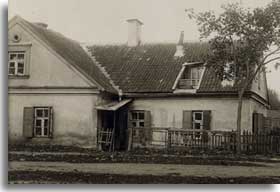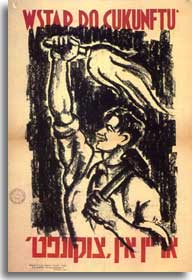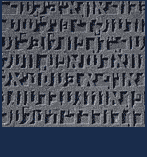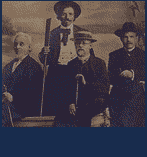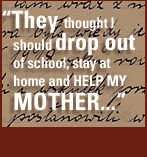

A. Jewish Socialism
By far the largest organization of Jewish Socialists was the "Bund  ." Its platform called for a culturally autonomous Jewish people living in a socialist state. There were other smaller organizations such as the Jewish Social Democratic Party (ZPSD), which had similar goals and which eventually joined with the Bund. Another significant Jewish socialist organization, Poalei Zion, the Jewish Socialist Workers' Party combined the ideas of Socialism and Zionist. While there is an important nationalist component to Poalei Zion, the fact remains that the Bund and Poalei Zion often combined forces politically; whereas, Poalei Zion and other Zionist factions were not always easy political allies. The Jewish political scene in the region was full of nuance and complexity. No black and white distinctions described or predicted the variety or duration of alliances or separations.
." Its platform called for a culturally autonomous Jewish people living in a socialist state. There were other smaller organizations such as the Jewish Social Democratic Party (ZPSD), which had similar goals and which eventually joined with the Bund. Another significant Jewish socialist organization, Poalei Zion, the Jewish Socialist Workers' Party combined the ideas of Socialism and Zionist. While there is an important nationalist component to Poalei Zion, the fact remains that the Bund and Poalei Zion often combined forces politically; whereas, Poalei Zion and other Zionist factions were not always easy political allies. The Jewish political scene in the region was full of nuance and complexity. No black and white distinctions described or predicted the variety or duration of alliances or separations.
BUNDISM
In 1897, the Union of Jewish Workers in Lithuania, Poland and Russia, otherwise known as the "Bund" was founded in Vilna, Poland. The Bund sought to bring about cultural autonomy for Jews within a socialist state. It believed that Jews did not need to emigrate in order to solve their problems, but rather, they proposed that a more realistic goal was to transform the states and societies in which the Jews were living. The Bund sought to enlist the solidarity of Jewish workers to achieve this goal, as they rejected integration or assimilation into the main society. Their goals and perspective also separated them from other national socialist groups, since these were not interested in the sponsorship of Jewish cultural activities.
The Bund went through a number of transitions. Before the World War I, like many other Jewish and non-Jewish political groups, the Bund was illegal and members would have to meet in secret. At that time young people largely comprised the membership. In fact, in many villages, despite the youth of the local Bund membership, it could influence the affairs of a village, traditionally ruled by older members of the community. The Bund also overturned tradition by welcoming both male and female members.
To understand the significance of this innovation, one must recall that women did not have the right to vote in the United States or in many European countries at that time. The incorporation and validation of women members in a political organization was a very radical departure from the norm. Perhaps the most important association of the Bund and Jewish culture came with its support and insistent use of the Yiddish language as the only way to reach out to the masses, and as a way to legitimize the culture of the "man in the street". After the World War I, the organization was legalized in most parts of Eastern Europe. In the USSR, the Bund became part of the Communist Party. In Poland and Lithuania, the Bund highlighted its cultural mission and remained part of the democratic socialist movement: it focused its interest on Jewish cultural nationalism and the preservation of Jewish cultural identity.
The Bund also became more nationalist in its politics, embracing specifically Jewish causes. When injustices were perpetrated against Jews - pogroms or other government anti-Jewish actions, the Bund, after noting that their fellow (non-Jewish) socialists did not intervene, sought ways to specifically protect the Jewish people. They organized protests against government actions against Jews, sometimes in conjunction with non-socialist, Orthodox Jewish organizations such as Agudas Yisroel  . The Bund also created self-defense units to defend the local Jewish communities against pogroms
. The Bund also created self-defense units to defend the local Jewish communities against pogroms  .
.
However, the main function of the Bund was always to support the worker; it successfully called strikes in a number of areas, which lead to vast improvements in working conditions. The Bund sponsored various programs that offered practical support to workers, including labor unions, strike funds, and other supportive assistance.
It also sponsored a wide range of cultural activities, from schools, to public lectures and entertainment events. It particularly supported activities, which used and promoted the Yiddish language, held to be the true language of the worker.
Although the Polish Bund was a Social Democratic organization, which officially opposed organized religion, Bund members (though not the leadership) on the local level still were often religious Jews. They attended synagogue, celebrated Jewish traditions, and led Jewishly centered lives. In the town of Swislocz, for a good example of this seeming contradiction, factory workers preparing to strike swore on Jewish ritual objects (in this case on tefilin) not to return to work until all of the strike demands were met.









